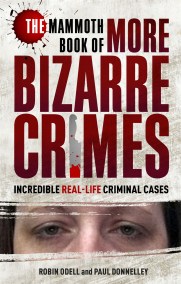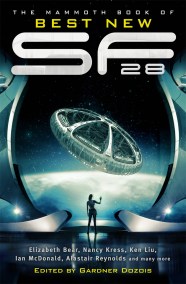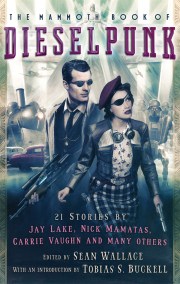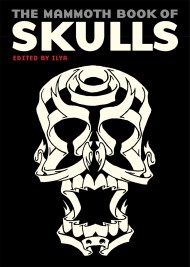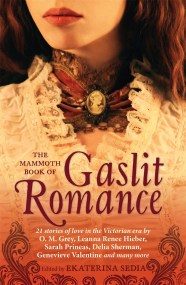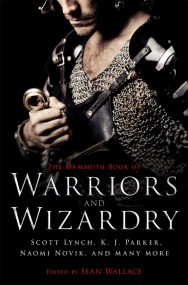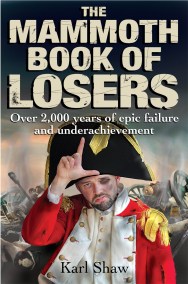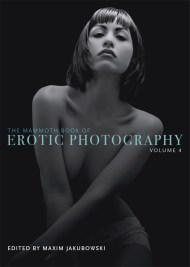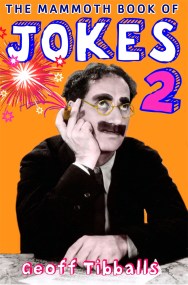Oh I Do Like to Be Beside the Seaside – Christopher Fowler
Christopher Fowler explains “‘. . . Seaside’ came about firstly because I was commissioned to write a story for the World Horror Convention souvenir book and, as the event was to take place in Brighton, it seemed logical to set a tale on the South coast of England.
“I had written a fantasy novel, Calabash, some years earlier, hinting at the dark madness of such seaside towns, which are the antithesis of their Mediterranean counterparts. I thought of the depressing Morrissey song “Every Day is Like Sunday”, which captures the awfulness of English resorts.
“Coincidentally, Kim Newman and I were discussing the inherent creepiness of pantomime dames, and I decided it was time to give vent to my horror of these coastal pleasure domes. I wish I’d thought to include screaming gangs of hen-nighters as well. And I thought it was a nice touch to have everyone in the story telling the hero to ‘fuck off’ until he finally does.”
Featherweight – Robert Shearman
“I don’t like writing at home much,” admits the author. “Home is a place for sleeping and eating and watching afternoon game shows on TV. There are too many distractions. So, years ago, I decided I’d only write first drafts in art galleries.
“And the best of them all is the National Gallery, in London, a pigeon’s throw from Nelson’s Column. I can walk around there with my notebook, thinking up stories – and if I get bored, there are lots of expensive pictures to look at. Perfect.
“A lot of those paintings, however, have angels in them. They’re all over the place, wings raised, halos gleaming – perching on clouds, blowing trumpets, hovering around the Virgin Mary as if they’re her strange naked childlike bodyguards. And I began to notice. That, whenever the writing is going well, the angels seemed happy, and would smile at me. And whenever the words weren’t coming out right, when I felt sluggish, when I thought I’d rather take off and get myself a beer, they’d start to glare.
“I wrote this story in the National Gallery. Accompanied by a lot of glaring angels. Enjoy.”
Lesser Demons – Norman Partridge
“I was surprised to receive an invitation for S.T. Joshi’s Black Wings,” reveals Partridge, “an anthology of Lovecraftian fiction. Although I knew S.T. admired my work, I’ve never quite seen myself as a Mythos writer.
“While I respect H.P. Lovecraft and his contribution to horror, I’ve never felt that his worldview (or maybe I should say universeview) meshed with mine.
“In the end, that’s what made the story work . . . at least for me. I concentrated on my differences with Lovecraft, and approached the material from a place where Jim Thompson would be more comfortable than HPL. And I’m delighted that so many people have enjoyed the tale – it was a lot of fun to write.”
Christopher Fowler explains “‘. . . Seaside’ came about firstly because I was commissioned to write a story for the World Horror Convention souvenir book and, as the event was to take place in Brighton, it seemed logical to set a tale on the South coast of England.
“I had written a fantasy novel, Calabash, some years earlier, hinting at the dark madness of such seaside towns, which are the antithesis of their Mediterranean counterparts. I thought of the depressing Morrissey song “Every Day is Like Sunday”, which captures the awfulness of English resorts.
“Coincidentally, Kim Newman and I were discussing the inherent creepiness of pantomime dames, and I decided it was time to give vent to my horror of these coastal pleasure domes. I wish I’d thought to include screaming gangs of hen-nighters as well. And I thought it was a nice touch to have everyone in the story telling the hero to ‘fuck off’ until he finally does.”
Featherweight – Robert Shearman
“I don’t like writing at home much,” admits the author. “Home is a place for sleeping and eating and watching afternoon game shows on TV. There are too many distractions. So, years ago, I decided I’d only write first drafts in art galleries.
“And the best of them all is the National Gallery, in London, a pigeon’s throw from Nelson’s Column. I can walk around there with my notebook, thinking up stories – and if I get bored, there are lots of expensive pictures to look at. Perfect.
“A lot of those paintings, however, have angels in them. They’re all over the place, wings raised, halos gleaming – perching on clouds, blowing trumpets, hovering around the Virgin Mary as if they’re her strange naked childlike bodyguards. And I began to notice. That, whenever the writing is going well, the angels seemed happy, and would smile at me. And whenever the words weren’t coming out right, when I felt sluggish, when I thought I’d rather take off and get myself a beer, they’d start to glare.
“I wrote this story in the National Gallery. Accompanied by a lot of glaring angels. Enjoy.”
Lesser Demons – Norman Partridge
“I was surprised to receive an invitation for S.T. Joshi’s Black Wings,” reveals Partridge, “an anthology of Lovecraftian fiction. Although I knew S.T. admired my work, I’ve never quite seen myself as a Mythos writer.
“While I respect H.P. Lovecraft and his contribution to horror, I’ve never felt that his worldview (or maybe I should say universeview) meshed with mine.
“In the end, that’s what made the story work . . . at least for me. I concentrated on my differences with Lovecraft, and approached the material from a place where Jim Thompson would be more comfortable than HPL. And I’m delighted that so many people have enjoyed the tale – it was a lot of fun to write.”
Newsletter Signup
By clicking ‘Sign Up,’ I acknowledge that I have read and agree to Hachette Book Group’s Privacy Policy and Terms of Use











